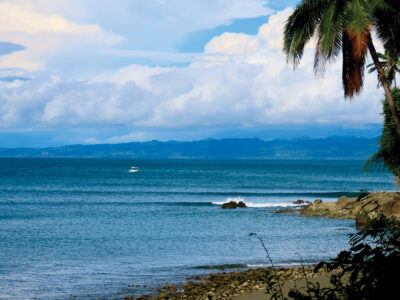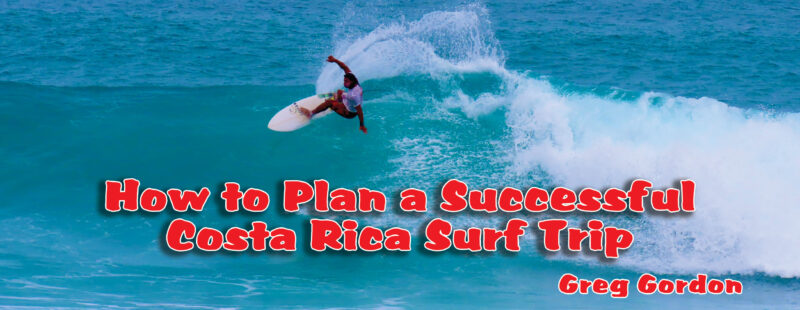How to Plan a Successful Costa Rica Surf Trip
 Whether it is your first surf trip or your 50th, it is important to plan where and when you want to go. You do not want to get skunked or find waves too big for your comfort level. You need to have the right boards to ride. You want to maximize your time surfing, and not driving around looking for waves. And you want to make sure you are safe and comfortable when you are not in the water. In the next few articles I will discuss each factor and provide tips on how to have the best time surfing in Costa Rica
Whether it is your first surf trip or your 50th, it is important to plan where and when you want to go. You do not want to get skunked or find waves too big for your comfort level. You need to have the right boards to ride. You want to maximize your time surfing, and not driving around looking for waves. And you want to make sure you are safe and comfortable when you are not in the water. In the next few articles I will discuss each factor and provide tips on how to have the best time surfing in Costa Rica
Check the Season and Tides
Most travelers know Costa Rica has two weather seasons—rainy season from May to November (rainiest in October) and dry season from December to April. But there are also wave seasons. Swells from the South hit the Pacific coast from mid-March to mid-October. Some Northwest swells hit the Pacific from December to March. And East swells hit the Caribbean coast from December to March.
If you want a better chance of catching bigger waves, travel between late March and early June to the Pacific side, and mid-January to mid-February on the Caribbean. There are other good months on the Pacific, but the later in the season you go the more chance it will be rainy and the winds won’t be in your favor. May is my favorite month on the Pacific since the first rains make everything greener, and it is no longer high season so there are less surfers in the lineup, but before summer when families go on vacation.
Not everyone wants big waves. You can find smaller surf during the bigger swells by going to beaches that are protected (like Manuel Antonio). Tamarindo is a popular option, as is Dominicalito and Pan Dulce on the Pacific side. On the Caribbean it can go dead flat outside of wave season, but beaches like Cahuita and Playa Cocles usually have some knee high peelers for beginners.
 The other major factor to consider when planning a surf trip are the tides. Luckily the CRsurf.com website has the tide charts for the entire year. It is based off of the tides in Puntarenas, but the difference in that location versus others on the Pacific is less than 20 minutes. Tides are a major factor since they can swing over 12 feet between low and high tides on the Pacific. The Caribbean side has less of a tidal swing, but can still be four to five feet and can make a difference when surfing a reef break or finding a sand bar that works.
The other major factor to consider when planning a surf trip are the tides. Luckily the CRsurf.com website has the tide charts for the entire year. It is based off of the tides in Puntarenas, but the difference in that location versus others on the Pacific is less than 20 minutes. Tides are a major factor since they can swing over 12 feet between low and high tides on the Pacific. The Caribbean side has less of a tidal swing, but can still be four to five feet and can make a difference when surfing a reef break or finding a sand bar that works.
On the Pacific side, the general rule is that the beach breaks work best around high tide, and the points and reef breaks work better at lower tides. In Manuel Antonio, the advanced break at Playitas is a high tide break. At the Quepos river mouth you want to surf it at low tide. Dominical is mostly a high tide break but can throw some barrels at lower tides and won’t close out if it is not too big.
It is not a hard fast rule though as Pan Dulce (on the Osa Peninsula) is a right reef point break that is best at high tide. And Playa Hermosa south of Jaco gets too deep at high tide so you want to surf it at mid-tide coming in. If you want smaller waves, low tide at beach breaks will cause the wave to close out on the outside, but then the reform and white water will be powerful enough to push you to the beach. As a beginner you should always surf with friends or a surf instructor and be wary of rip currents, which are strong at every tide.
There are a ton of factors to consider when planning a Costa Rica surf vacation, but it starts with finding the best time of year to go based on what type of waves you are looking for. If you want help making those decisions feel free to contact me at greg@crsurf.com or message me on Instagram @crsurf.

